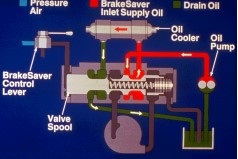When the BrakeSaver retarder is in operation, the braking force available is in direct relation to the amount of oil in the compartment. The BrakeSaver control valve determines the amount of oil delivered to the unit.
BrakeSaver Operation
When the oil is warm, the oil is sent to the BrakeSaver control valve. If the BrakeSaver control lever is in the OFF position, spring force holds the valve spool against the cover at the air inlet end of the control valve. With the valve spool in this position, the valve directs the warm oil to the oil cooler. From the oil cooler the oil goes back through the BrakeSaver control valve and returns to the oil pan.
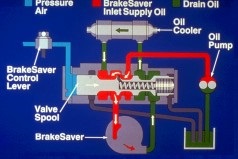
BrakeSaver Operation
If the BrakeSaver control lever is in the ON position, air pressure moves the valve spool to the right against the spring force. Engine oil from the oil pump is sent through the control valve to the BrakeSaver. After the oil goes through the BrakeSaver, it returns to the BrakeSaver control valve. The valve then directs the oil to the oil cooler. From the cooler, the oil again returns to the control valve and is sent back to the oil pan.

BrakeSaver Lubrication
Lubrication for the BrakeSaver retarder is provided by an outside oil line from the engine lubrication system. This oil lubricates the piston ring seals and the lip-type seals under all conditions of BrakeSaver retarder operation. The drain line returns the oil to the oil pan.
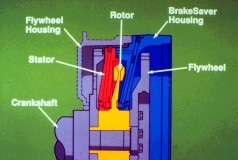
BrakeSaver Components
The BrakeSaver housing is fastened directly to the rear face of the flywheel housing. The BrakeSaver retarder consists of the housing, stator and rotor. The rotor is attached to the crankshaft and rotates in a space between the stator and the housing.
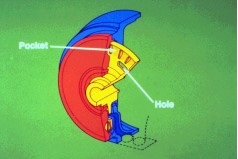
BrakeSaver Rotor
The rotor has pockets on the outer circumference of both sides and four holes to permit equal oil flow to both sides.
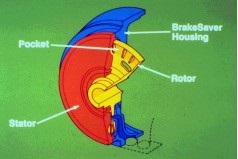
BrakeSaver Housing
The BrakeSaver housing and the stator are fastened to the flywheel housing and cannot turn. Both the housing and the stator have pockets on their inside surfaces in alignment with the pockets in the rotor.
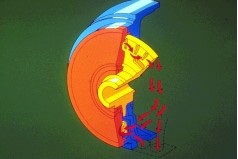
BrakeSaver Operation
When the BrakeSaver retarder is in operation, engine oil comes into this compartment from a passage in the bottom of the housing. The rotor, turning with the crankshaft, throws this oil outward into the stator and the housing compartment. The pockets or vanes on the turning rotor, force the oil to flow in the BrakeSaver compartment.
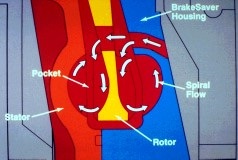
BrakeSaver Operation
If the area in the stator and housing were smooth, the rotor and oil would turn inside the compartment with little opposition. However, both the stator and housing have vanes which are opposite the rotor. These vanes oppose the flow of the oil in the compartment induced by the rotor. It is this resistance of the oil flow that creates the retarding action of the BrakeSaver retarder.
This resistance to the oil flow creates heat in the oil which is removed by the oil cooler.
